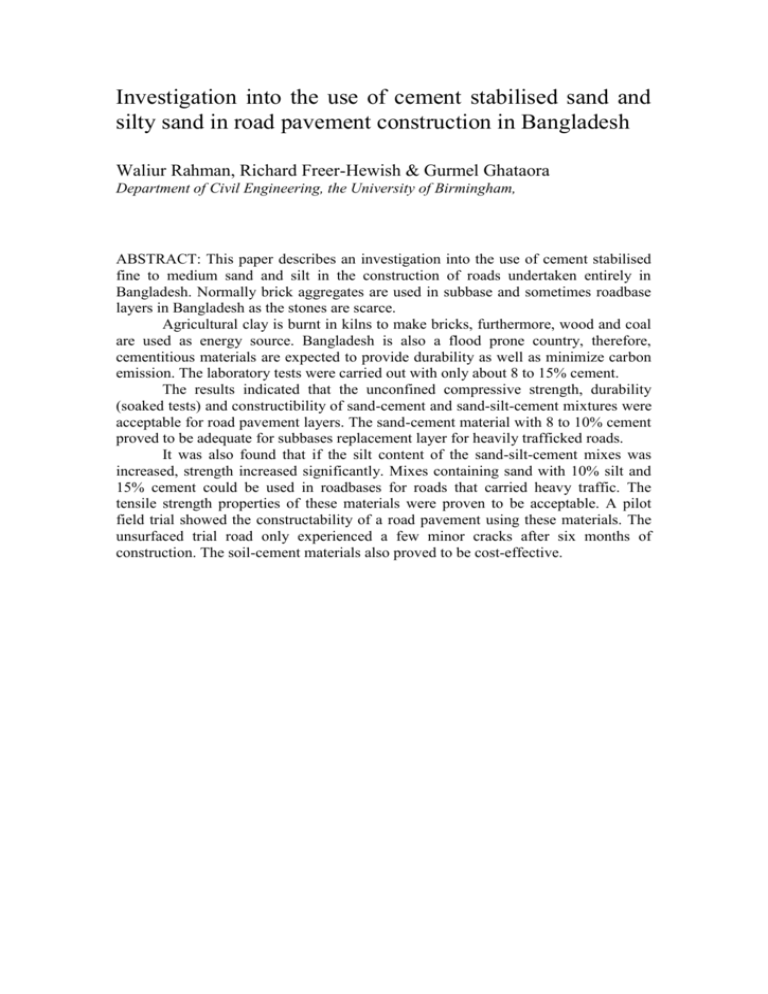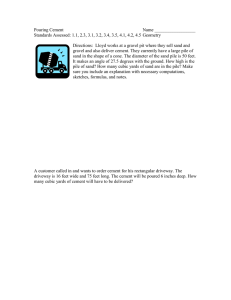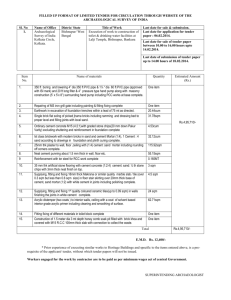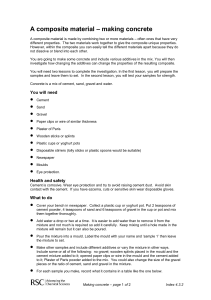Investigation into the use of cement stabilised sand
advertisement

Investigation into the use of cement stabilised sand and silty sand in road pavement construction in Bangladesh Waliur Rahman, Richard Freer-Hewish & Gurmel Ghataora Department of Civil Engineering, the University of Birmingham, ABSTRACT: This paper describes an investigation into the use of cement stabilised fine to medium sand and silt in the construction of roads undertaken entirely in Bangladesh. Normally brick aggregates are used in subbase and sometimes roadbase layers in Bangladesh as the stones are scarce. Agricultural clay is burnt in kilns to make bricks, furthermore, wood and coal are used as energy source. Bangladesh is also a flood prone country, therefore, cementitious materials are expected to provide durability as well as minimize carbon emission. The laboratory tests were carried out with only about 8 to 15% cement. The results indicated that the unconfined compressive strength, durability (soaked tests) and constructibility of sand-cement and sand-silt-cement mixtures were acceptable for road pavement layers. The sand-cement material with 8 to 10% cement proved to be adequate for subbases replacement layer for heavily trafficked roads. It was also found that if the silt content of the sand-silt-cement mixes was increased, strength increased significantly. Mixes containing sand with 10% silt and 15% cement could be used in roadbases for roads that carried heavy traffic. The tensile strength properties of these materials were proven to be acceptable. A pilot field trial showed the constructability of a road pavement using these materials. The unsurfaced trial road only experienced a few minor cracks after six months of construction. The soil-cement materials also proved to be cost-effective.











